AS SEEN IN





Home » 9 Wildlife Hide Designs that Really Work
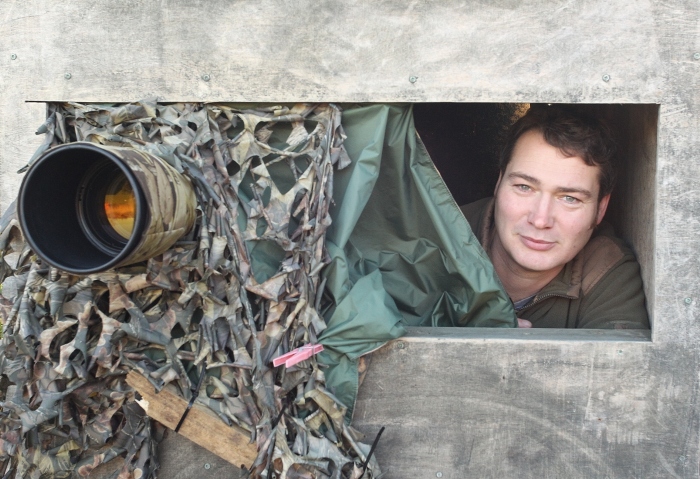
I spend a considerable amount of time watching and photographing wildlife from hides in order to capture every detail of their character in my paintings. I use a great variety of different structures to get as close as possible without being detected. These range from simply wearing camouflage clothing, to fully insulated, heated hides complete with double glazing and carpets. Over the years I have developed my own wildlife hide designs tailored to the species I’m watching, but essentially my choice of wildlife hide is dictated by how long I am likely to be watching an animal for. And the longer I have to wait in a hide, the comfier I make it.
For mobile subjects that are unlikely to stay in the same place for very long, like hares, deer or otters, I simply disguise myself and my camera in camouflage. I have a whole wardrobe of appropriate clothing, ranging from white ski suits for the winter and lightweight camouflage jackets that can be rolled into a backpack for summer. 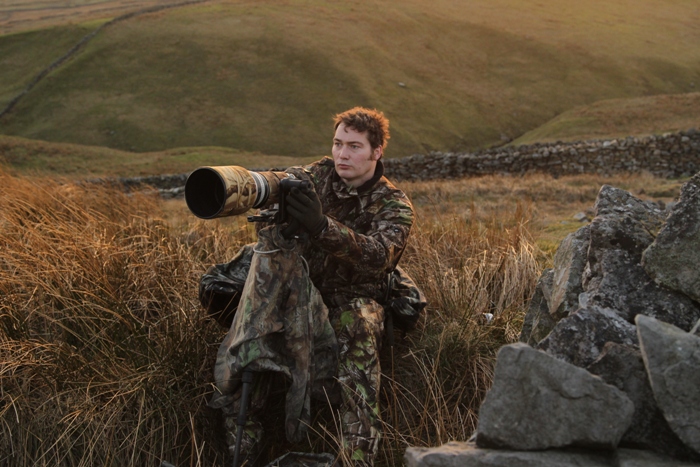
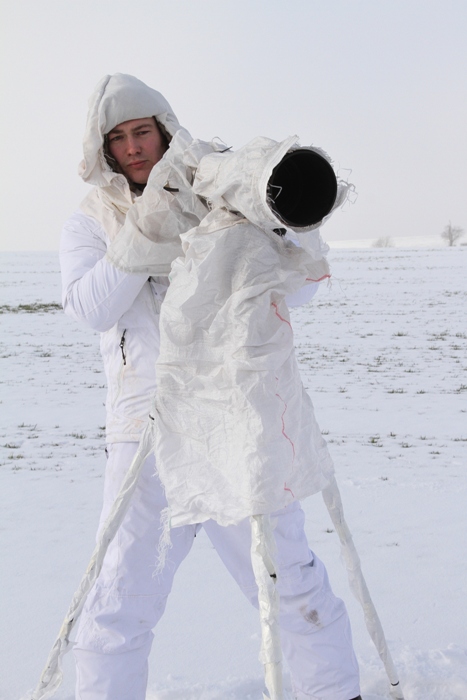
You don’t need to invest in an expensive ski suit to creep up on wildlife in the snow. I’ve used a DIY white spray suit before. I wrapped a pillowcase around my head, wore white oven gloves on my hands and wound white potato sacks around my tripod and camera.
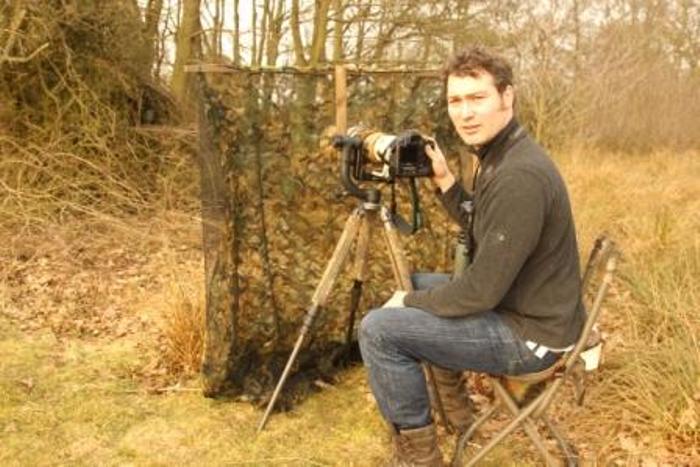 When I am traveling, or if I don’t have enough time to put up a hide before a species moves on, I use pop-up or canvas hides. These are commercially available, and I buy a lot of mine from Wildlife Watching Supplies. The owner there is very accomodating and will even adapt equipment to suit my camea size. But it is very easy to make your own. I have one that rolls up small enough to carry in my rucksack that I made from a wide piece of camouflage netting cable-tied to two pieces of wood bolted together into a T-shape. I tie this to my tripod head with cable ties and it hangs in front of me and my camera like a curtain.
When I am traveling, or if I don’t have enough time to put up a hide before a species moves on, I use pop-up or canvas hides. These are commercially available, and I buy a lot of mine from Wildlife Watching Supplies. The owner there is very accomodating and will even adapt equipment to suit my camea size. But it is very easy to make your own. I have one that rolls up small enough to carry in my rucksack that I made from a wide piece of camouflage netting cable-tied to two pieces of wood bolted together into a T-shape. I tie this to my tripod head with cable ties and it hangs in front of me and my camera like a curtain.
If I don’t have my usual equipment with me I make rudimentary hides from sticks propped around bushes. I made the hide below after spotting kites whilst on a family holiday in Australia. I wove dead grasses and foliage through the sticks then lined the inside with green clothing. Click here to read about the whistling kites I watched in Australia and see the photographs I took.
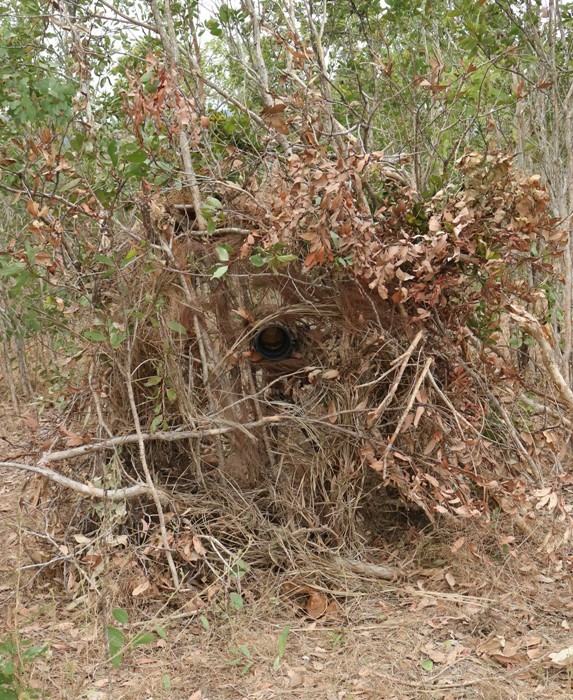
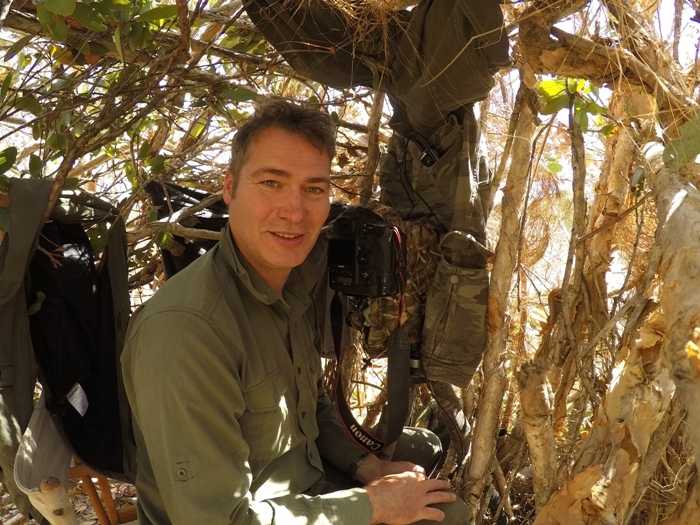
And for the above hide overlooking an osprey nest, I lined the inside of a bush with a pair of camouflage-design shorts and some camouflage camera covers. Once I was inside, a colleague laid more branches and dead grasses over me until I was completely concealed. Click here to see the photographs I took of the osprey from inside this hide.
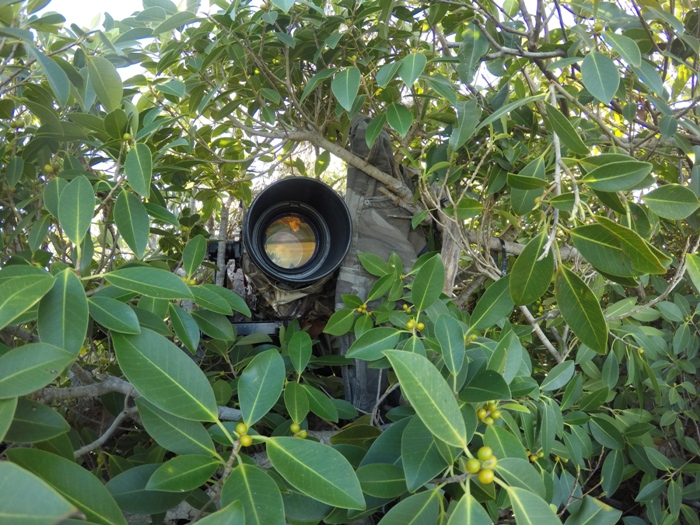
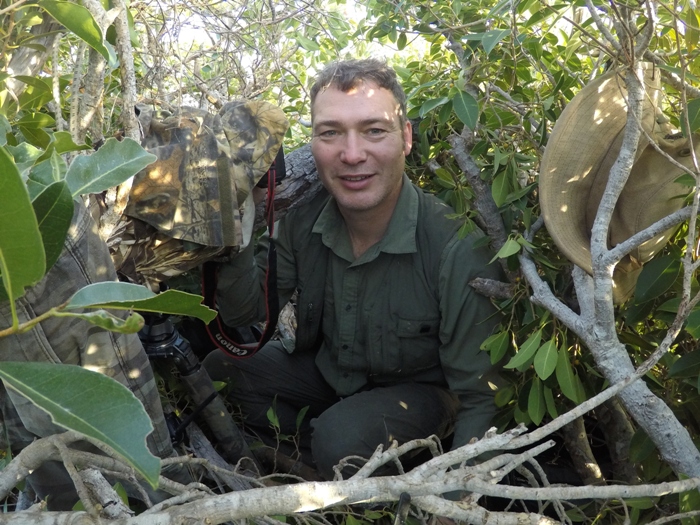
For longer term solutions, I make simple plywood structures. A typical design of mine measures four foot square and six foot high with a main opening at the front and a sturdy shelf to bolt my tripod heads onto. I use up to three cameras at once so I don’t want the tripod legs to get in the way. To make these I fix the walls, floor and roof together using wooden batons then tack roofing felt on top to make it watertight. I always lay old carpet on the floor to keep the noise down, since the plywood walls are very thin and I don’t want to scare away the wildlife every time I move.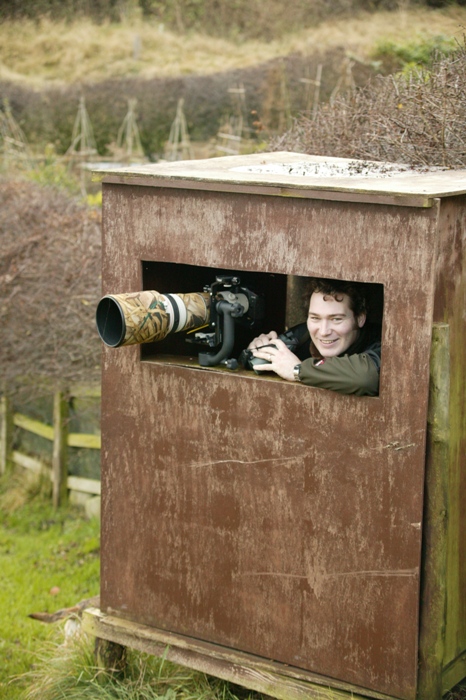
How to make this simple wildlife hide design:
An easy option, which gives you a more luxurious structure, is to simply cut an opening into a garden shed. I adapted a child’s Wendy house in this way in order to watch a family of foxes in a suburban garden. The window only needs to be wide enough to fit a camera lens through it. Click here to see the gorgeous fox photographs I took from this simple wildlife hide.
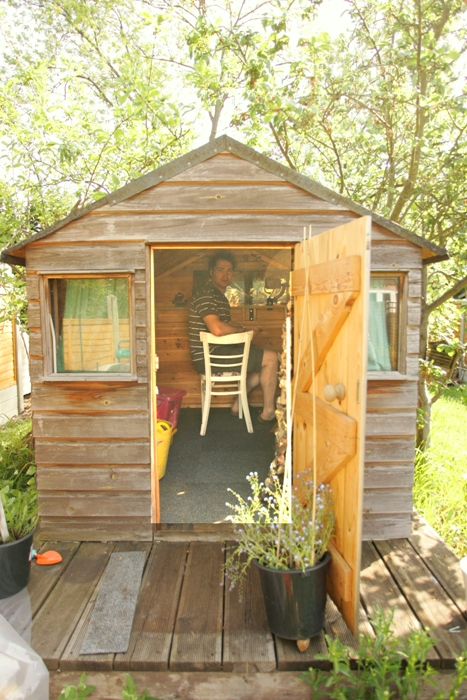
I also use my house as a giant hide. I have planted my garden with shrubs and hedging to provide plenty of cover and there are feeding stations and nest boxes for birds, weasels and stoats throughout. I also feed birds of prey from my garden bird table so that I can photograph them from my living room window. It is not uncommon to find my kitchen window boarded up from the inside, save for a hole for my camera to fit through!
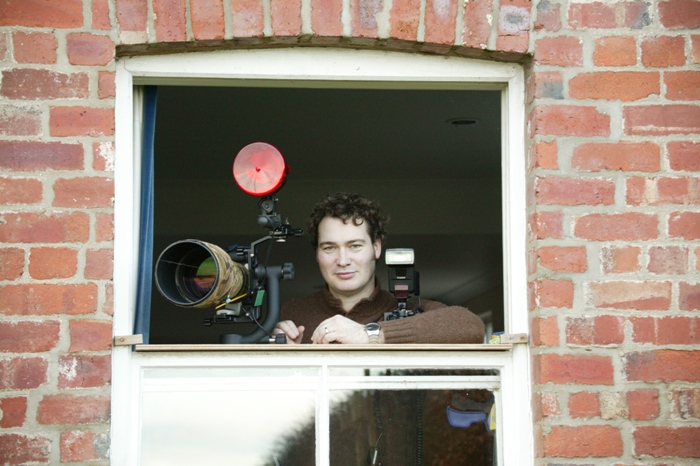
I like to be at eye level to my subjects, or just above them, and so if my subject is up high I build a tower or, where possible, winch a hide up a nearby tree. The hide below was built on stilts to watch buzzards. Click here to see the photographs I took and read more about the project.
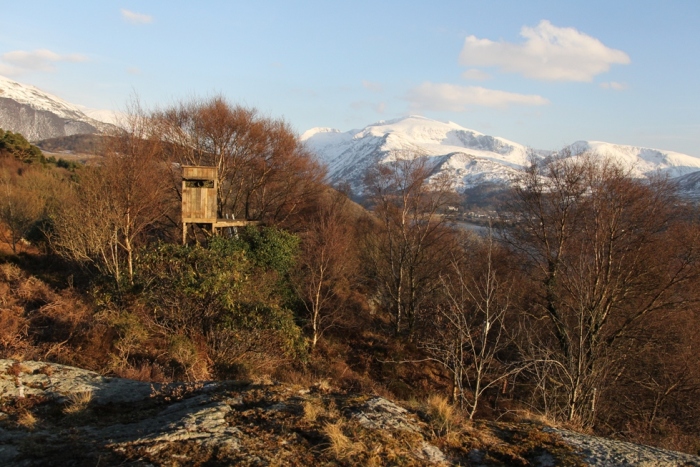
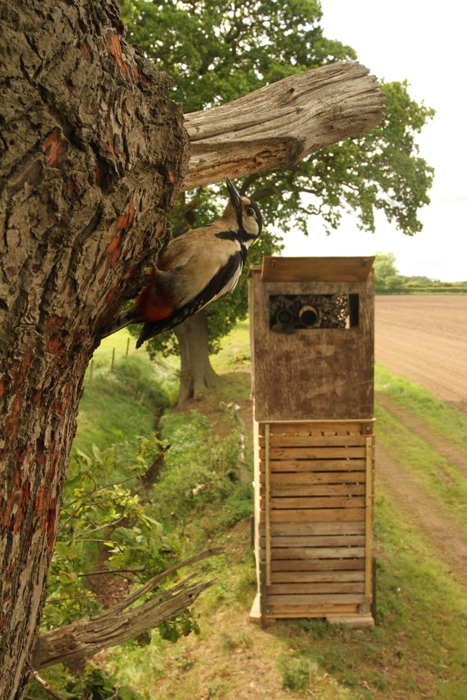
For the hide above overlooking a woodpecker nest, I stacked three ton potato boxes on top of one another and screwed vertical planks of wood across the boxes to secure them. I then built the hide on top: lifting a section up at a time. Click here to see the photographs I took of the woodpecker chicks and read the story.
For some subjects it is worth building a more permanent structure. Badgers use the same sett for generations and if you have one on your land or have permission you can devote years to watching them. I have a hide five metres above a badger sett that is insulated, has double glazed windows and a heater. It needs to be, I spend up to four or five hours a night in there. Click here to read about my evenings with the badgers at this hide.
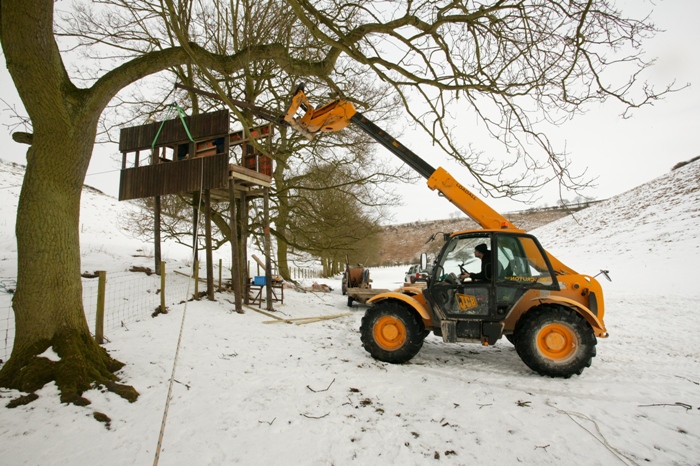
The most complex hide I have built to date was also an entire habitat to attract kingfishers. It took eight weeks to build and involved making a platform on stilts for the hide to sit on. I adapted a garden shed for this project, covered the roof and walls in mud mixed with peat, sharp sand and cement so that it looked like a natural riverbank. Click here to read in more detail about how I built this hide and see the incredible photographs and video I took of kingfisher chicks inside their nest.
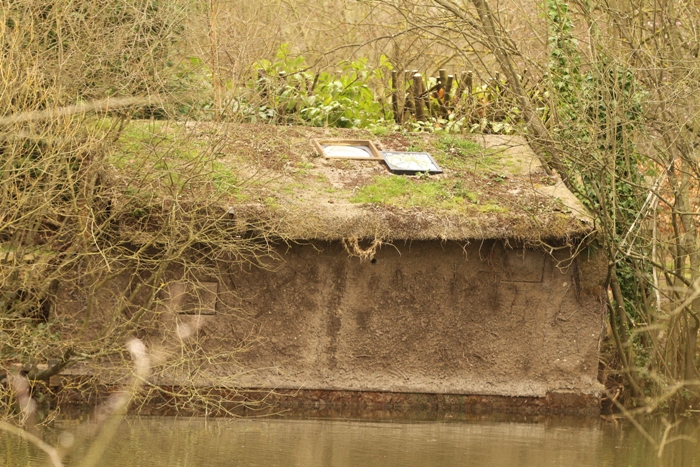
Sometimes being inside a hide can be frustrating since your vision is so limited. I rely on my field craft to know when a subject is approaching. Birds will call out in alarm if a predator is nearby and chicks will suddenly start calling their parents if I am at a nest.
But recently I’ve added CCTV cameras to the outside of my hide with a seven inch screens inside so that I can see anything as it approaches. I carry a battery pack to fuel this. And in my house I have a more elaborate CCTV system linked to a bank of TV monitors so that I can keep track of the wildlife in the garden. I can even view the action on my Ipad.
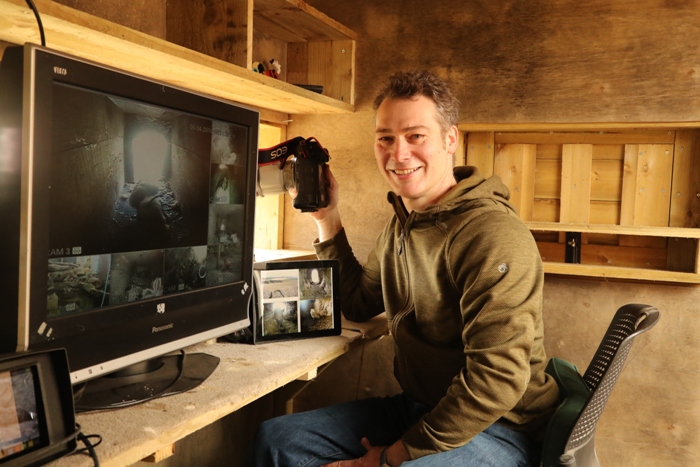

At the bottom of my garden I have a very high tech hide that is equipped with more than 20 wildlife cameras linked to five TV monitors and reached by an underground tunnel leading from my house. The tunnel is made from a seven metre long three-foot wide drainage pipe. I use a trolley and pulley system to manoeuvre down its length. It means if I spot something from my house I can get to my hide without scaring it away.
None found
Sign up to my newsletter for updates on news, wildlife sightings, products and more directly to your inbox
AS SEEN IN





THE ROBERT FULLER GALLERY
FOTHERDALE FARM
THIXENDALE, MALTON
YO17 9LS
UNITED KINGDOM
TEL: +44 (0) 1759 368355
EMAIL: mail@robertefuller.com